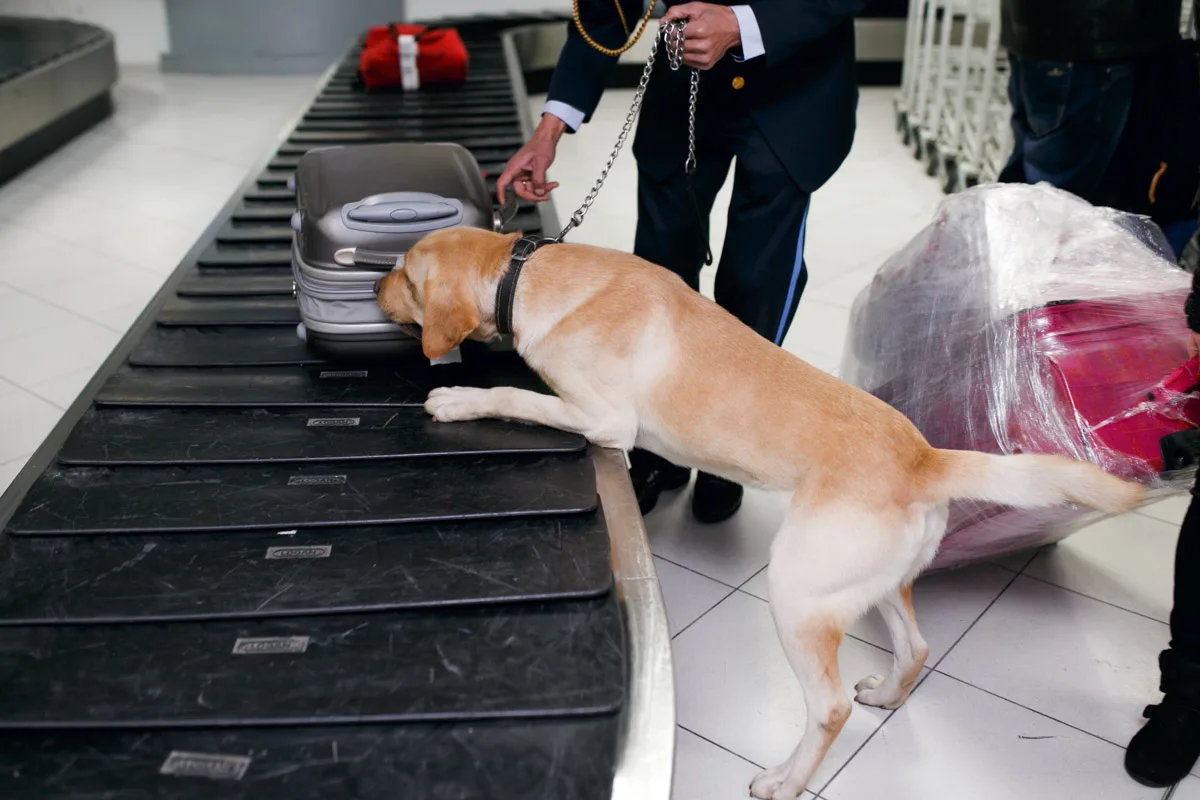Drug dogs, also known as narcotics detection dogs or sniffer dogs, have long been utilized by law enforcement for their incredible olfactory abilities. The question of what can drug dogs smell is astonishing to most.
These highly trained canines possess an extraordinary sense of smell, enabling them to detect and locate hidden drugs with astonishing accuracy.

In this post, we will explore the remarkable capabilities of narcotic detection canines and delve into what substances they can detect through their keen sense of smell.
What substances are drug dogs trained to detect?
Law enforcement drug dogs are trained to detect numerous illegal substances.
According to the United State Police Canine Association, drug dogs are trained to detect cocaine, heroin, methamphetamine, MDMA and optionally in marijuana as well.
Other substances that drug dogs are commonly trained to detect include LSD / lysergic acid diethylamide, fentanyl, and PCP / phenylcyclohexyl piperidine.
Some are even able to smell mushrooms and dogs that work in schools or prisons are often trained to smell nicotine as well.
Drug dogs can also form an association to derivatives of the imprinted odors. One such example would be heroin which the U.S. Department Of Justice listed as an opioid. Drug dogs are trained to detect heroin and often will form an association to other opioids such as oxycodone, methadone and fentanyl to name a few.
What’s also fascinating is that some drug dogs are trained to smell for human remains. These cross trained dogs are commonly referred to as cadaver dogs.
Drug dogs can and do smell money at times, however they are not trained to alert to money itself. They are trained to alert to the presence of the odor of drugs which could be on the money or currency itself. This is a helpful skill as money and drugs are often intertwined in detection operations.

How are drug dogs trained to smell odors?
Drug sniffing dog breeds undergo intensive training programs where they are imprinted on specific target odors. Once imprinted, they are exposed to various odors associated with the target substances.
They learn to recognize and distinguish these odors from others, enabling them to alert their handlers when drugs are present.
This alert is known as a final response. Handlers often employ positive reinforcement techniques to reward the dogs when they successfully detect the target odor.
An example of positive reinforcement imprinting is when the dog smells a container with the target odor the handler or trainer marks that behavior using either a verbal marker or with clicker training and then immediately rewards the dog with a toy or food.
The dogs quickly begin to pair the odor with the reward. This leads to the dogs building a desire to hunt for the specific odor.
Once this behavior is exhibited, a final response is taught by instructing the dog to perform a specific task such as sitting or scratching once they have located the odor. This behavior is then marked and immediately rewarded.
Non-target odors, referred to as distracting odors, are slowly added to the search area to ensure the dog continues to only detect and alert to the drug odor. Some examples of distracting odors include, plastic bags, rubber bands and even dog toys.
It is worth noting that drug dogs are trained to identify the odor of drugs rather than specific quantities. Their primary function is to provide an indication of the presence of illegal substances, which then prompts further investigation by law enforcement officers.
The final word on what drug dogs can smell
Drug dogs are trained on specific target odors of controlled substances however this often leads them to be able to detect a large array of substances that are derived from the target odors they are trained on.
The potential list of derivatives from the different classes of controlled substances that drug dogs can detect is vast.

